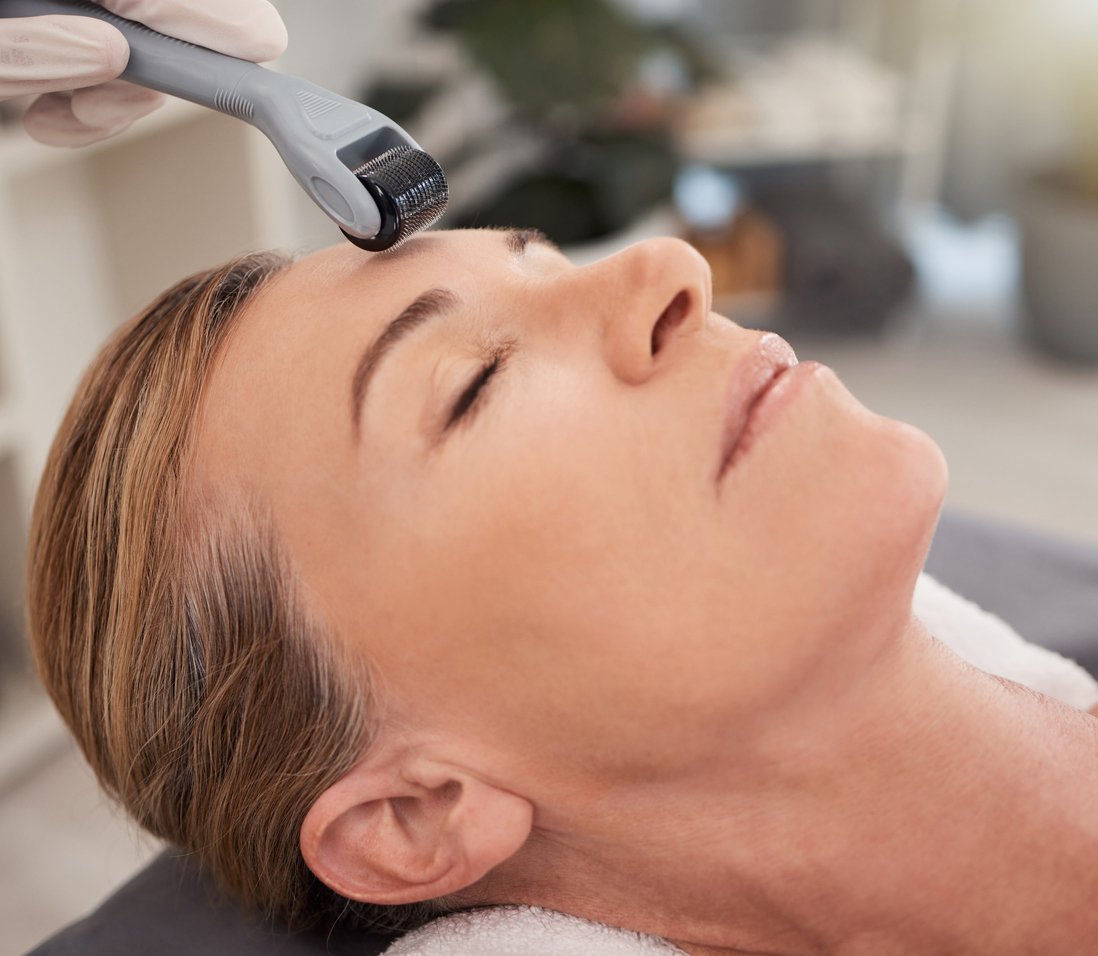What is Microneedling?
Are you looking to improve the look of scars, decrease fine lines, or shift stubborn pigmentation? If the answer is yes then microneedling might offer a solution for you.
What is Microneedling?
Simply put, microneedling is the controlled puncturing of the skin using very fine short needles, for the purposes of skin rejuvenation. Devices can be hand ‘rollered’ or delivered using an electronic device, they both do the same thing and are both made up of micro-fine needles that range in diameter from 0.5 and 2.5 millimeters.
What is it used for?
-Reducing fine lines and improving skin texture
-Minimising scars
-Treating hyperpigmentation
-Improved hair growth
Needling is used to stimulate the deeper layers of the skin to encourage (fibroblast) cells to make more collagen and elastin as well as increase cell turnover. This results in glowing and rejuvenated skin in the short term but also helps boost plumper more youthful skin after repeated treatments. The mechanical action of the needling can also be a good way to break up pigment that is lying deeper in the skin.
I also find needling is a great way to deliver active ingredients deeper into the skin for treatment of pigmentation such as melasma and to help boost collagen. In some cases use of the patient’s own stem cells taken from a blood sample can be delivered into the skin (aka a vampire facial) via the needle entry points which supercharges the rejuvenating effects.
Men may find this treatment helpful for male pattern balding, as it has been proven to help encourage dormant hair follicles to reactivate and slow the receding or hairline and balding.
Does it hurt?
Generally this is a well-tolerated treatment, especially after I apply numbing cream for 15 minutes prior to starting. Needling in the scalp can be more uncomfortable and so I often perform a local anaesthetic block so that it is pain free.
How long does it take?
It takes about 30 minutes from start to finish.
Is there any down time?
Most of my patients look a little sunburned for a few hours post treatment but this doesn’t usually last for more than a day. Often patients describe their skin as feeling a little tight for a few days and some get some mild flaking of the skin particularly around the nose. I recommend not using makeup for at least 24 hours post treatment to avoid the risk of infection and to get the most out of the procedure.
Who can have this treatment?
It can be used on all skin colours and skin types, however it should be avoided if one has an active infection (e.g. active acne pustules) and those with hypersensitive skin, acute eczema or sun burnt skin should also avoid the technique.


